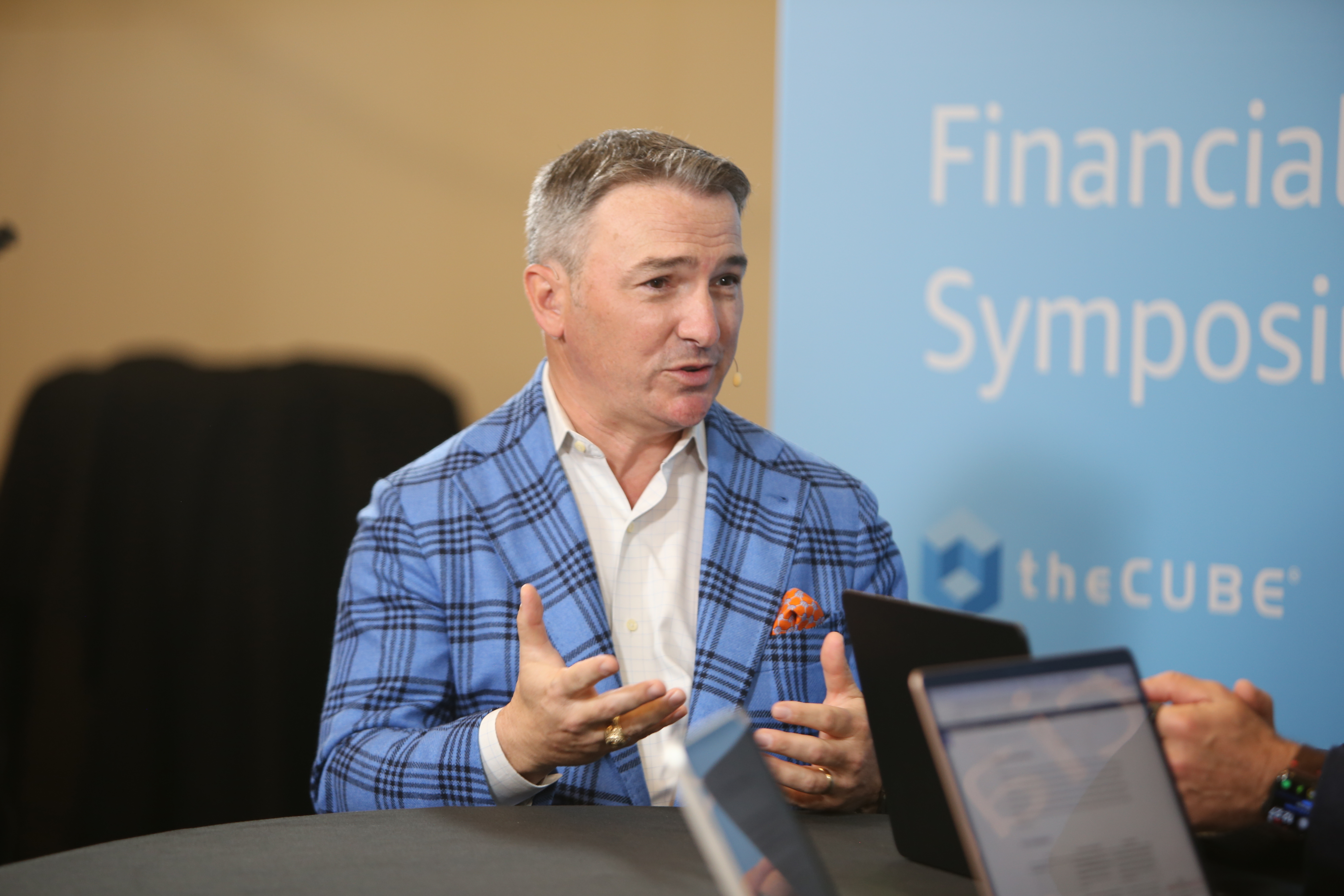 AI
AI
 AI
AI
 AI
AI
AI for financial services is no longer a distant vision — it’s reshaping how the industry thinks about risk, regulation, customer experience and innovation itself. From streamlining fraud detection to modernizing data architectures, financial institutions are leveraging AI not just to keep up, but to lead.
As enterprise-grade tools mature and cloud platforms such as Amazon Web Services Inc. scale up their offerings, these organizations are deploying AI in tangible, transformative ways — and watching new value vectors emerge in real time.
That momentum was on full display during the AWS Financial Services Symposium, where theCUBE captured a series of candid, expert-driven conversations. From Splunk’s approach to AI-powered cybersecurity to SAS Institute Inc.’s cloud-forward reinvention of legacy systems, each discussion offered a snapshot of how AI is moving from abstract hype to concrete results across financial operations.
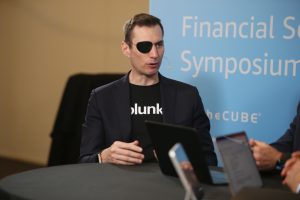
Splunk’s Peter Sprenger discusses AI for data security with theCUBE.
“On AI, it’s something where there’s the allure of the promise of AI, and we’ve gotten to the point where there are now these contours we can see, we can see it in practice in some use cases,” said Peter Sprenger, field chief technology officer of the Americas at Splunk, a Cisco Co., in an event interview with theCUBE. “We’ve also come down from the high a little bit where we’ve realized that for AI to work, you have to have a good data program and a good AI program, and the people that maybe didn’t invest in a good data program at the onset, they now have some catching up to do. But you have to do both.”
Sprenger, along with other industry experts, spoke with theCUBE’s Dave Vellante and Scott Hebner at the AWS Financial Services Symposium event, during an exclusive broadcast on theCUBE, SiliconANGLE Media’s livestreaming studio. Here’s how the conversations unfolded during theCUBE’s exclusive interviews at the event:
By speeding up detection, reducing alert fatigue and enabling faster, more informed decision-making, AI and actionable data are transforming cybersecurity in financial services. However, for companies to harness these benefits, they must have strong data programs in place, with a “team of teams” model to unify siloed operations, according to Cisco’s Sprenger.
In an industry plagued by increasing attack complexity and regulatory demands, trust, explainability and speed are critical. AI for financial services is also empowering cybersecurity professionals, rather than replacing them, by automating routine tasks and freeing up analysts to focus on high-value work, Sprenger added.
Check out the full segment on theCUBE.
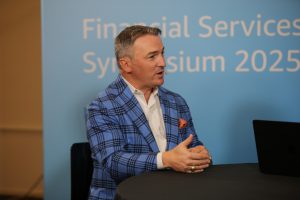
AWS’ Scott Mullins talks with theCUBE about the company’s “Blaze, Break and Push” mantra.
Amazon Web Services Inc. has evolved its message, moving beyond cloud migration to focus on business transformation. Today, it’s about empowering people, refining processes and delivering measurable outcomes — not just deploying technology. At the Symposium, that shift came to life through a call to blaze trails, break barriers and push limits, according to Scott Mullins (pictured, featured image), general manager of worldwide financial services at AWS.
AWS’ Nova model also highlights its commitment to performance, cost-efficiency and customer choice across AI solutions. Finally, the company’s focus is shifting from assistants to decision-making agents — through knowledge graphs, RAG and causal AI — to elevate business outcomes.
Don’t miss the complete interview on theCUBE.
The ongoing financial services industry revolution has featured cloud partnerships and AI-driven innovation for fraud mitigation in banking. The collaboration between IBM Corp. and AWS highlights a shift toward client-centered, outcome-based consulting, according to Glenn Finch, global managing partner of cognitive and analytics at IBM.
Prudential Financial Inc., on the other hand, has embarked on a modernization journey, overhauling legacy systems and launching AI-enhanced mobile apps and intelligent digital services that improve customer experiences, according to John Glooch, chief information officer, group benefits, of Prudential Financial.
Truist Bank’s philosophy is one of doing data right from the ground up, highlighted by its patent surge and efforts in fraud detection beyond traditional credit card monitoring, according to Steven Allen, senior vice president of CDO payments, treasury, commerce and ops at Truist Bank.
Catch the entire conversation on theCUBE.
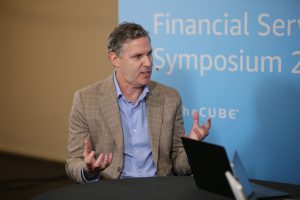
SAS’ Chris Parrish discusses AI agents and data integrity with theCUBE.
Companies such as SAS are leaving legacy analytics in favor of a cloud-forward model with AI natively integrated for advanced decision making — blending traditional models with large language models.
While LLMs bring value through summarization and unstructured data handling, they are insufficient alone, according to Chris Parrish, senior data scientist at SAS. The company’s solution is “decision intelligence,” which combines orchestration, governance and trust in the implementation of verticalized AI solutions. SAS is helping clients — from major banks to insurers — scale securely on AWS, driving automation and cost savings.
Hear the full story on theCUBE.
With 9 of the top 10 North American banks using its platform, MongoDB Inc. is proving its scalability, agility and trustworthiness for mission-critical workloads, according to Peyman Parsi, senior principal of financial services industry solutions – Americas, at MongoDB.
The platform’s document-based, JSON-native model supports dynamic data structures and horizontal scalability, which are key for legacy modernization. MongoDB also integrates gen AI, vector search and semantic re-ranking to enhance fraud detection, reduce hallucinations and boost trust, Parsi added. The acquisition of Voyage AI adds domain-specific models tailored to finance, law and code generation.
Watch the full segment on theCUBE.
As data operations become more disparate and sensitive, software supply chain security has become more crucial than ever. Eighty percent of code in modern applications comes from third-party sources, creating significant and often overlooked risk, according to Paul Davis, field chief information security officer of JFrog Ltd. Historical breaches such as SolarWinds and Log4J have pushed supply chain security to the forefront.
With the rise of AI-generated and agentic software, having clear traceability and visibility has never been more critical. That’s where JFrog comes in — offering end-to-end visibility into software binaries and seamless integration with AWS to help organizations cut risk and streamline their toolsets, Davis added.
Watch theCUBE’s full sit-down.
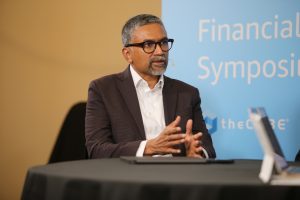
Tata’s Rajesh Santhanam talks with theCUBE about how financial firms are scaling AI from pilots to production with a focus on governance and real impact.
Financial firms have progressed from cautious AI experimentation to deploying production-grade solutions that drive efficiency and value, according to Rajesh Santhanam, global head of AI, cloud and ecosystem, Financial Services, at Tata Consultancy Services Ltd. Early pilots focused on risk, AML and marketing personalization; but today, leaders emphasize governance frameworks, platform development and use-case onboarding.
However, blockers to AI for financial services include legacy on-prem systems, skill gaps and trust barriers around privacy, hallucinations and transparency. Firms can address these via responsible-AI frameworks and governance committees, Santhanam added.
Check out theCUBE’s complete interview.
Founded in 2001, Smarsh Inc. helps financial institutions archive and supervise a growing array of electronic communications — from email and chat to video and AI-generated interactions. With organizations facing oversight from hundreds of global regulators, there’s a growing need for scalable, flexible solutions that adapt to evolving laws and technologies, according to Patrick Palomo, principal solutions architect at Smarsh.
The company uses a blend of traditional machine learning and modern LLMs to filter, monitor and analyze massive volumes of communications, surfacing potential misconduct, complaints and even business opportunities. Its cloud-native, AWS-powered platform ensures agility and global data residency compliance as companies harness AI for financial services, Palomo added.
Don’t miss the full interview on theCUBE.
Here’s the complete video playlist from SiliconANGLE’s and theCUBE’s coverage of the AWS Financial Services Symposium event:
(* Disclosure: TheCUBE is a paid media partner for the AWS Financial Services Symposium event. Neither Amazon Web Services Inc., the sponsor of theCUBE’s event coverage, nor other sponsors have editorial control over content on theCUBE or SiliconANGLE.)
Support our open free content by sharing and engaging with our content and community.
Where Technology Leaders Connect, Share Intelligence & Create Opportunities
SiliconANGLE Media is a recognized leader in digital media innovation serving innovative audiences and brands, bringing together cutting-edge technology, influential content, strategic insights and real-time audience engagement. As the parent company of SiliconANGLE, theCUBE Network, theCUBE Research, CUBE365, theCUBE AI and theCUBE SuperStudios — such as those established in Silicon Valley and the New York Stock Exchange (NYSE) — SiliconANGLE Media operates at the intersection of media, technology, and AI. .
Founded by tech visionaries John Furrier and Dave Vellante, SiliconANGLE Media has built a powerful ecosystem of industry-leading digital media brands, with a reach of 15+ million elite tech professionals. The company’s new, proprietary theCUBE AI Video cloud is breaking ground in audience interaction, leveraging theCUBEai.com neural network to help technology companies make data-driven decisions and stay at the forefront of industry conversations.